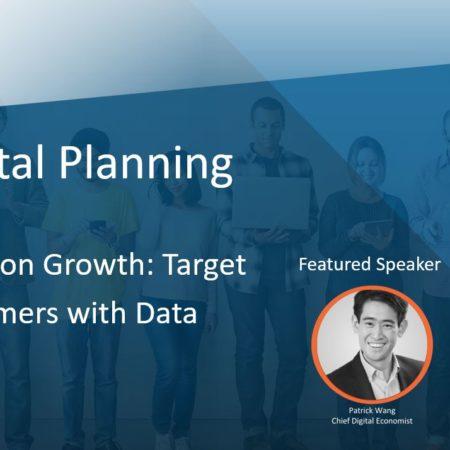Marketers should stop counting leads and shift their focus to Lifetime Value (LTV)
Not all customers are created equally.
Some stumble upon your brand, drop in to test out your product or service, and maybe make a small purchase – only to never come back. Others are instantly enamored by your offer, build a connection with your brand, and quickly turn into customers for life. It’s hard to say which path a new visitor to your business will take if you’re simply casting a wide net with your marketing efforts. Hoping that a few of your new “leads” stick around leaves a lot to fate and can quickly drain whatever marketing budget you have.
All too often I hear marketers throw around “leads generated” as a success metric worth bragging about. While it might be a good indicator of the overall impact of a marketing campaign, it fails to deliver on your real business objective: driving profitable growth by increasing your long-term customer base.
Besides, a lead is not an actual customer. It’s merely the potential for someone to become a customer. At that point, the ball is in your court to make that lead believe in your business. That takes time, money, and valuable resources before that conversion ever happens – and when it does happen, there’s still no guarantee this new customer will continue coming back for more.
Consider Blue Apron’s lackluster story of going public. At the time of the IPO, the company claimed one million customers, but was still far from profitable. Why? Because many of those customers were still in the “trial” phase of their relationship with the brand. They were willing to give the meal kit service a shot, but not necessarily ready to commit to an ongoing subscription. Unfortunately, this assumption proved to be true, with the company now facing a surprisingly high estimated churn rate of 72 percent within six months. Add to that the cost of acquiring a new customer over the last twelve months, estimated at a whopping $460 per customer, and it’s becoming a challenge for the company to break even. This is a perfect example of leads not delivering long-term value. Blue Apron saturated the market with offers and promotions – from digital to direct mail – but that’s about as far as they got.
When this happens, you have to ask yourself, “Was this worth the cost?” The easy way to answer this question comes down to a relatively simple calculation of Lifetime Value (LTV)/Customer Acquisition Cost (CAC). If you aren’t at least breaking even, it’s time to rethink your overall customer acquisition strategy. To put this in context, the most sophisticated businesses regularly achieve customer lifetime value at three to five times the cost of acquiring a customer. This is where you want to be. It’s not sustainable to consistently have the scales tipped in the opposite direction.
Marketers have got to be smarter, savvier, and much more efficient when it comes to customer acquisition. They need to think like economists and operators, not like campaign managers and traditional marketers. They need to shift their focus from “generating leads” to “finding the right customers.” This means building a strategy that ultimately delivers long-term profitable growth.
As one client recently said to me: “I’m moving from a cost center to the revenue team.” That’s the spirit! Your business objective is to be profitable. As such, your marketing team needs to deliver more than just new customers; it needs to deliver great ones. Unfortunately, it’s hard to achieve that goal if you don’t stay laser-focused on earning the loyalty of “profitable customers.” Mind you, the responsibility for this doesn’t just sit within marketing or sales. The customer must be at the heart of every business decision made, from the Board of Directors down.
The truth is, customer acquisition is a lot like matchmaking. You should be looking for the right fit, not just the right now. Obviously, your end goal is to have as many potential customers as possible “swipe right.” But when they do, you have to be ready to get that relationship going. This is what drives customer lifetime value. So, given the choice between volume and value, wouldn’t you rather spend time, money, and available resources on building long-term relationships with the most profitable customers? (Your answer should be, “yes!”)





